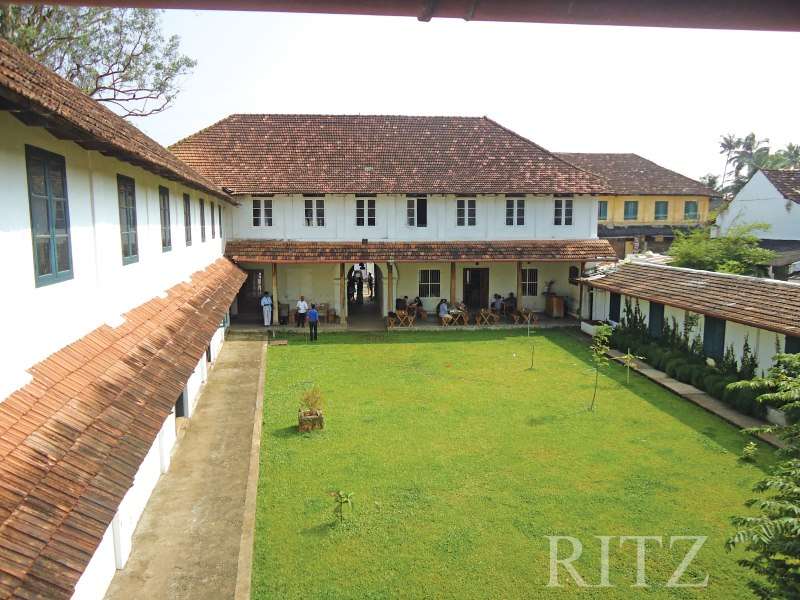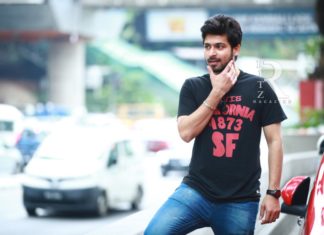The Land Of Coconuts and Culture
The shores of Fort Kochi have been like a Venus Fly Trap for traders, luring them to its rich lands from shores afar and imbibing into its character a bit of essence from each one of them. From giant fishing nets that are remnants of ancient Chinese architecture, to a 400-year-old Jewish Synagogue, quaint mosques courtesy Arab traders who landed here, Portuguese houses and bungalows that are remnants of the British Raj, today’s Fort Kochi is a charming blend of Portugal, Holland, China, England and a dash of Malayalee magic thrown in for good measure. Archana Shenoy explores this quaint part of Kerela’s coastline.
[wzslider autoplay=”true” transition=”‘flash'” lightbox=”true”]
Since the beginning of Common Era, Arabian and Chinese traders sourced spices, especially pepper, cinnamon, cardamom, cloves, sandal wood etc. from the Kochi region. Cultivation and trade of these valuable goods shaped the history of the region. Fort Kochi, or Old Kochi as it was known earlier derives its name from the Malayalee term kochazhi, which literally translates to ‘little estuary’.
The area of modern day Kochi known as Fort Kochi was granted to the Portuguese in 1503 by the Rajah of Kochi, after the forces of Afonso de Albuquerque helped him fight the forces of Saamoothiri of Kozhikode. The Rajah also gave them permission to build Fort Emmanuel near the waterfront to protect their commercial interests. The first part of the name Fort Kochi comes from this fort, which the Dutch later destroyed. The Portuguese built their settlement behind the fort, including a wooden church, which was rebuilt in 1516 as a permanent structure, today known as the St Francis Church. Fort Kochi remained in Portuguese possession for 160 years. In 1683 the Dutch captured the territory from the Portuguese, destroyed many Portuguese institutions, particularly Catholic convents. The Dutch held Fort Kochi in their possession for 112 years until 1795, when the British took control by defeating the Dutch.

Today when you look left you feel you’re in a tiny Portuguese village, look right and it transforms into a Dutch hamlet. Head to the shore and find giant Chinese fishing nets languishing on a hyacinth infested beach alongside a statue of Portuguese explorer Vasco da Gama; a beautiful Dutch cemetery and loads and loads of Malayalee flavour enhanced by chattering fish mongers, elaborate Kathakali masks and scores of white saree clad ladies.
Jew Town
It is the centre for the spice traders of the area with the historic pepper auction house located a few streets away from the iconic Jewish Synagogue. The air is thick with the cloying aroma of spices – cardamom, cloves, cumin, ginger and of course the black gold of Kerala – pepper. The by-lanes around the small, but beautiful Dutch Palace and synagogue are filled with traders hawking so-called antiques, local handicrafts, blue pottery and tons and tons of curios.
Originally built in 1568, the synagogue was partially destroyed by the Portuguese in 1662, and rebuilt two years later when the Dutch took Kochi. It features an ornate gold pulpit and elaborate hand-painted, willow-patterned floor tiles from China. The clock tower was built in 1760. There is an upstairs balcony for women, who worshipped separately according to Orthodox rites.
Mattancherry Palace
Built by the Portuguese in 1557 and presented to Raja Veera Kerala Varma of Kochi, the Palace was renovated in 1663 by the Dutch. The palace with a Bhagavathi Temple in the central courtyard is built like the typical Kerala style mansion – the Nalukettu – the home of the aristocracy, nobility and upper classes, with four separate wings opening out to a central courtyard.
The double storeyed palace building which stands by the panoramic Kochi backwaters has an exquisite collection of murals collectively covering over 300 sq ft of its walls. The themes of these murals have been borrowed from the great Indian epics – the Ramayana and the Mahabharata, and mythology and legends about the Hindu gods especially Guruvayurappan. Some murals depict scenes from Kumarasambhavam and other works of the great Sanskrit poet Kalidasa. Also on display are royal paraphernalia like weapons, swings and furniture which offer a glimpse of the lifestyle of the royal family.
Kerala Kathakali Center
In an intimate, wood-lined theatre, this place provides a useful introduction to Kathakali, complete with handy translations of the night’s story. The centre also hosts daily performances of the martial art of kalarippayattu.
Chinese Fishing Nets
The huge cantilevered fishing nets that droop towards the waters like over-sized hammocks have become a hallmark that represents Fort Kochi on the tourist map. Once just a fishing accessory, it is a now a big bait for tourists. Chinese fishing nets – Cheenavala in Malayalam – are believed to have been introduced in Kochi by Chinese explorer Zheng He, from the court of the Kubla Khan. The fishing net established itself on the Kochi shores between 1350 and 1450 AD.

The sight of the Chinese nets, suspended in mid air and standing in line on the beaches, when silhouetted against the sunset is breathtakingly beautiful. It is, undoubtedly, one of the most photographed sights in Kochi.
For the best view of the nets, head to the Vasco da Gama Square, the narrow walkway that runs along the Fort Kochi beach.
While mainland Ernakulam is a vibrant city boasting of much local history and the famous Middle East chain Lulu Mall and Hypermarket, it is the old historical towns of Fort Kochi and Mattancherry that remain wonderfully atmospheric, redolent with flavours of foreign invasions and scores of traders, each one of whom left their unique stamp on its shores.















